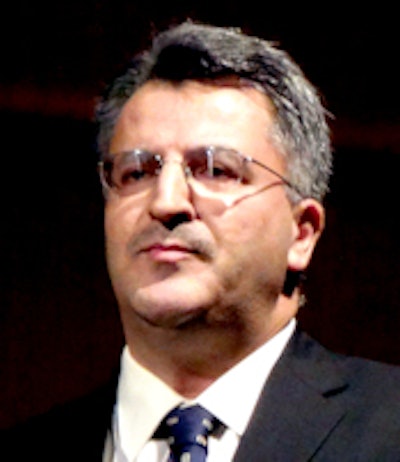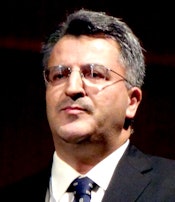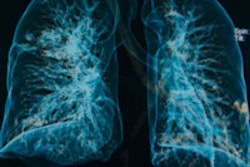
People with longer smoking histories -- twice as long as those in the 30-pack-year sweet spot for CT lung screening -- have nearly twice the odds of presenting with lung cancer at CT screening, according to a study presented at ECR 2014 by researchers from Ohio.
Based on data from the National Lung Screening Trial (NLST), individuals with smoking histories as long as 60 pack-years are almost twice as likely to be diagnosed with lung cancer at baseline CT screening. However, the trend did not include individuals with 42 pack-years or less of smoking history, the group from Case Western Reserve University and the Cleveland Clinic found.
Individuals in the 60-pack-year group also tended to be older and they began smoking earlier than those with 30-pack-year histories. The study did not address the hot topic of whether some characteristics of those with less than a 30-pack-year history might give them greater odds of a lung cancer diagnosis at CT screening.
 Dr. Recai Aktay.
Dr. Recai Aktay.
"The main research question was, in selecting for lung cancer screening, does setting the smoking criteria higher than 30 pack-years improve lung cancer predictability," said Dr. Recai Aktay, who noted that screening costs are a major concern as the U.S. government ponders the question of population-based screening for lung cancer.
"We often use 30 pack-years or more as a selection criterion for screening," Aktay said. But even when individuals meet this bar (adopted by NLST investigators and eventually recommended by several medical societies), "up to 95% of nodules turn out to be benign and only 27% of those biopsied are cancerous, so these findings involve a lot of concern about cost per diagnosis, radiation, anxiety, and nodule management complications."
Beginning with NLST's population of 53,452 men and women ages 55 to 74 years, the research team randomly selected a total of 6,000 "high-smoking" (≥ 60 pack-years, n = 2,911) and "low-smoking" (≤ 42 pack-years, n = 3,089) individuals, with the latter used as controls.
Next, Aktay and colleagues Dr. Peter Mazzone and Thomas Love, PhD, calculated the likelihood that individuals in either the high-smoking or low-smoking group would receive a cancer diagnosis over a 6.5-year follow-up period. They analyzed the data by 48 different variables, such as patient demographics and socioeconomic indicators, smoking and alcohol history, and occupational exposure.
Differences between the groups were revealed in four of the 48 covariates, including age, age at onset of smoking, diabetes, and cardiovascular disease, Aktay said. On the other hand, asbestos exposure did not differ significantly between the two groups.
Greater odds of diagnosis
Aktay and colleagues analyzed a subgroup of 1,493 pairs of study subjects who were matched for propensity, age, history of diabetes, and cardiovascular disease. The odds ratio of so-called high-smokers being diagnosed with lung cancer was 1.96 (confidence interval: 1.22-3.29, p = 0.008) -- that is, almost twice the odds of the low-smoking group, they found.
The high-smoking group was also older (mean 62 years versus 60 years), and the participants were younger when they took up the habit (mean 16 years old versus 18 years old).
The researchers did not analyze the study group based on smoking histories less than 30 pack-years, Aktay noted.
The analysis also skipped any estimation of the harms associated with cost, radiation, overdiagnosis, or management complications. Other study limitations included the selection of just 6,000 of the 53,452 NLST participants for analysis, a number that was whittled down to 1,493 matched pairs.
However, the study was sufficient to show that individuals with pack-year histories greater than what was demonstrated in the NLST criteria had a higher propensity for developing cancer, according to the researchers.
"A smoking history of 60 pack-years or more is a strong predictor of lung cancer among the screened NLST population," Aktay concluded. He cautioned, though, that "much research work is certainly needed to determine if a smoking grade higher than 30 pack-years for patient selection will provide mortality reductions with a better benefit-harm balance."



















